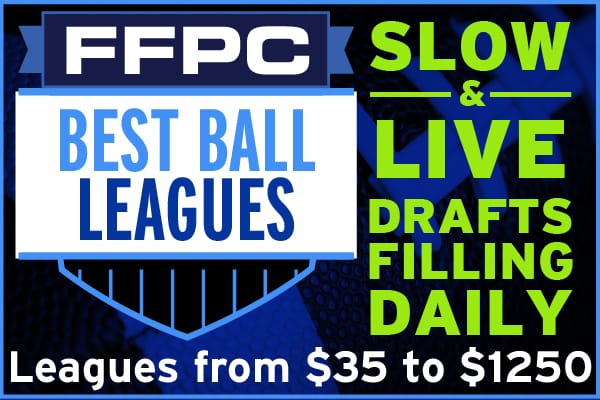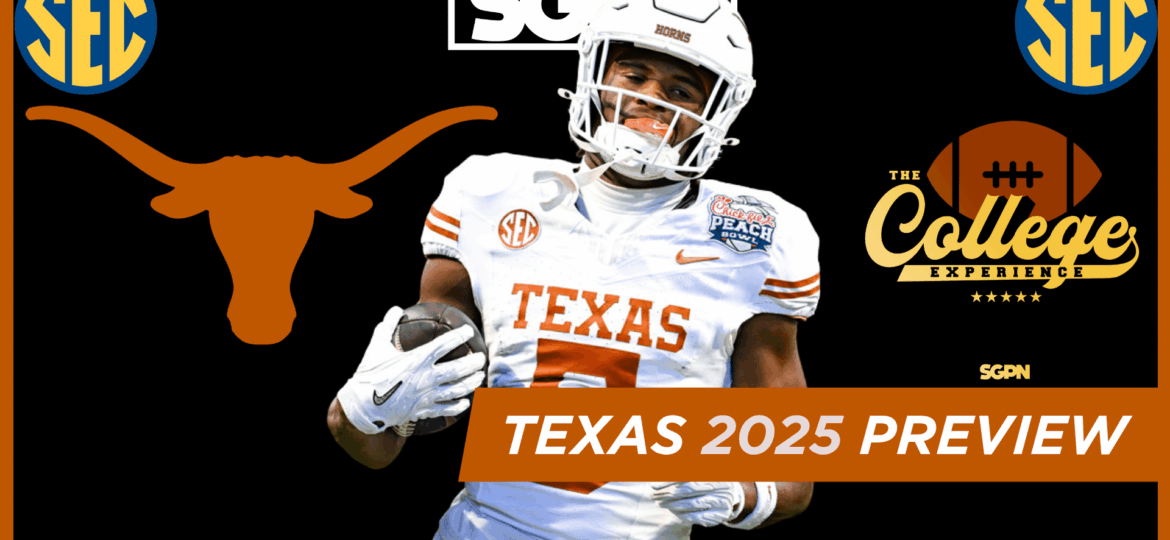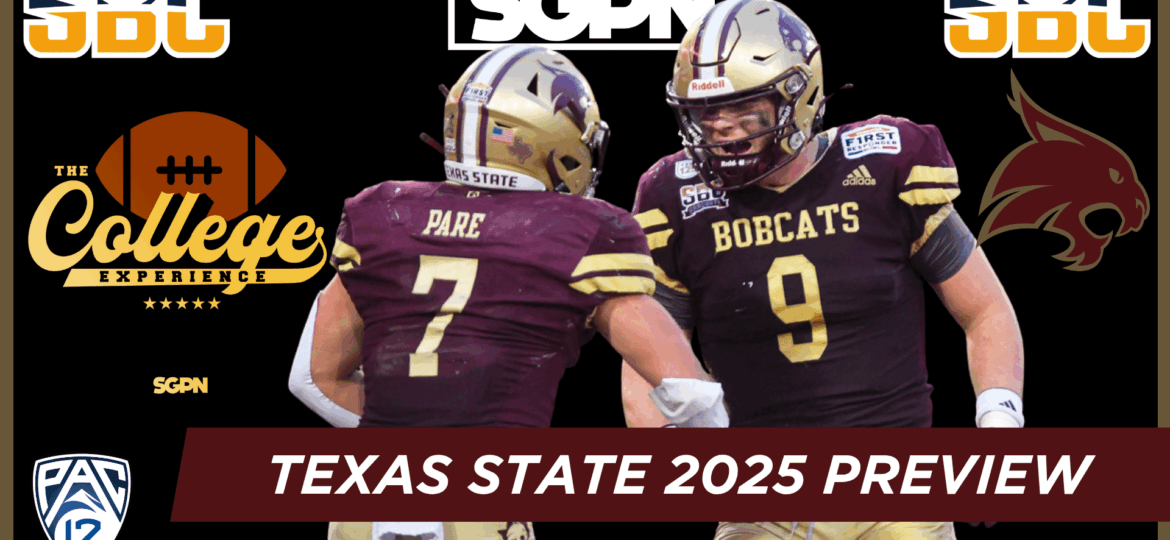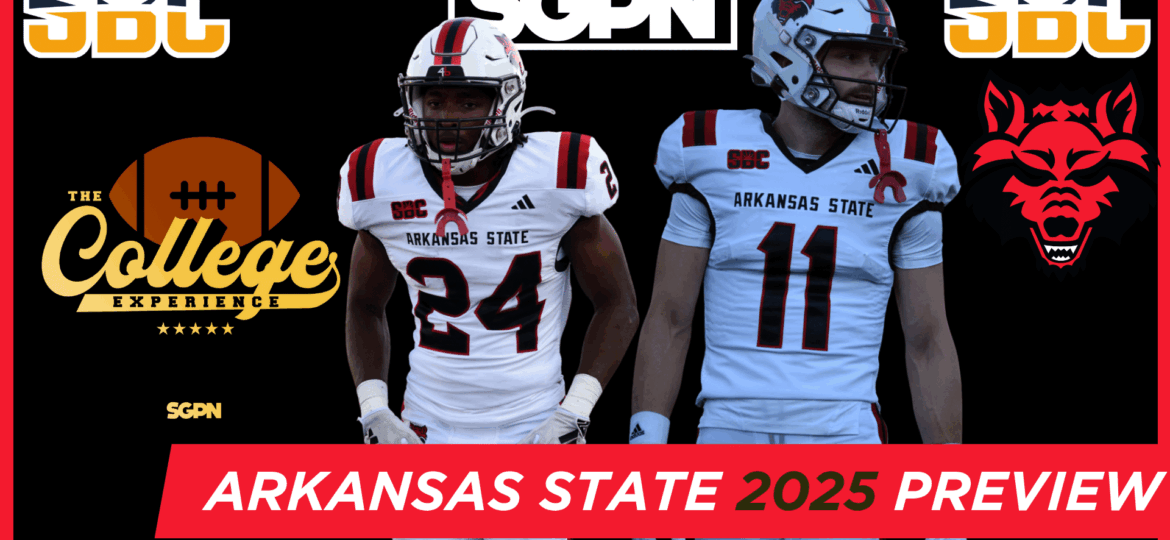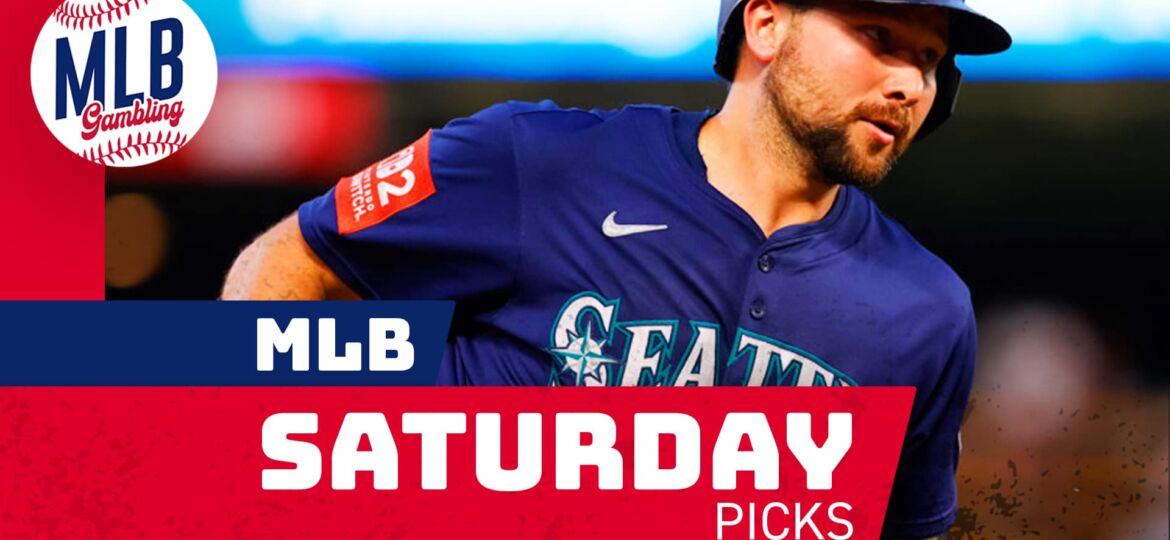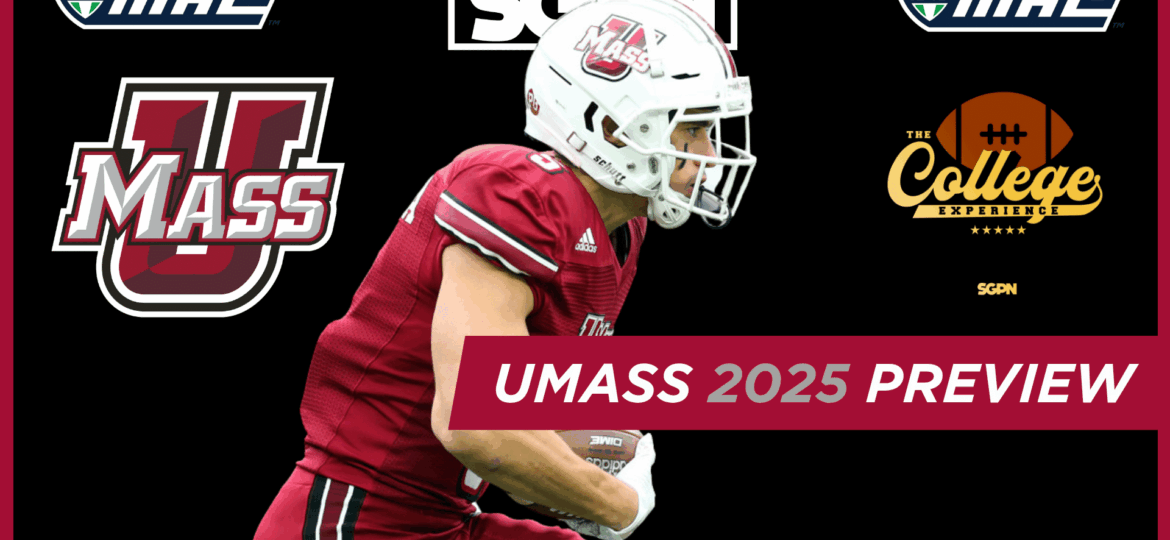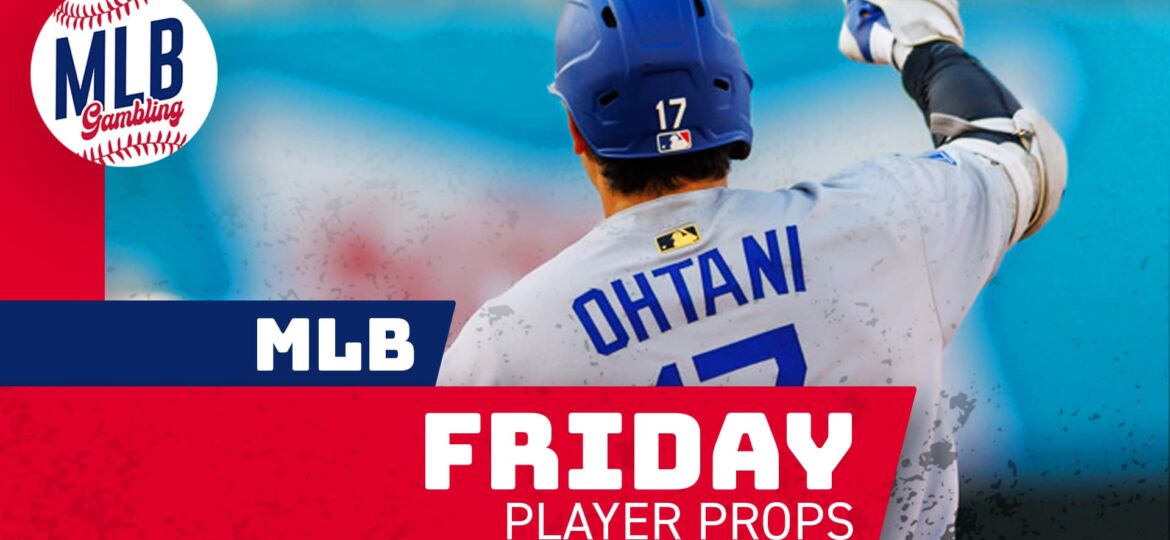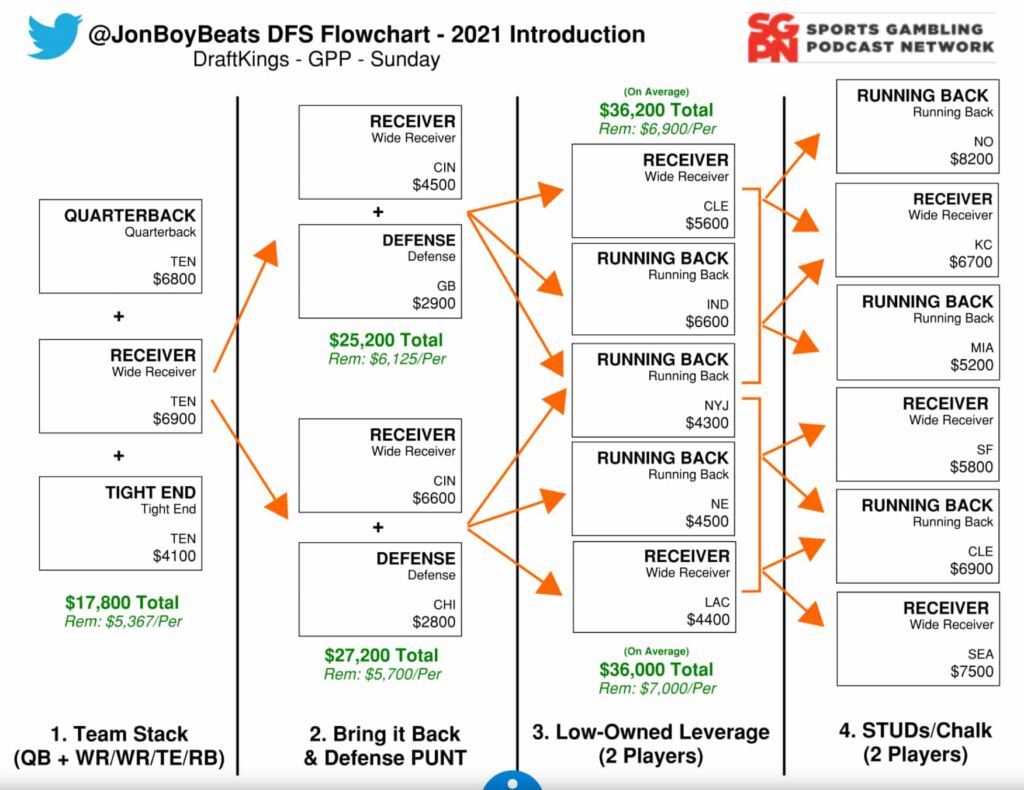
Welcome everyone to the start of a new football season! For us, the fans, this next week is the absolute best. All 32 of our teams are still undefeated and many of us feel good about their Super Bowl aspirations. None of your futures bets on win totals, Offensive Rookie of the Year, or season-long player props are dead. And if you are like me you have probably topped off the DraftKings and Sportsbook balances to get ready for the new season! But, how do you approach the DraftKings NFL contests from a strategy standpoint?
EXCLUSIVE SGPN FANTASY CONTENT
SGPN Fantasy Football Projections
SGPN Fantasy Football Rankings
Whether you are a long-time follower of my NFL DraftKings flowcharts, or if this is the first time you have stumbled across these crazy-looking diagrams, this introductory article is for you! In less than one week, I will be posting the official Week 1 Flowchart, but today I wanted to spend some time behind the curtain talking through the ins and outs of this tool.
I will reference this article many times throughout the upcoming season, so please get familiar with it. A lot of the information here (and in my weekly articles), can be applied to your other DFS lineups as well. Each week, we want to have well-constructed, high-correlated lineups that inherently provide us an advantage over the field regardless of the actual players that are included. Here’s how we will approach the DraftKings NFL flowchart from a strategy standpoint!
Entering the Correct Contest Types
For those of you extremely new to daily fantasy, there are two main types of contests; cash games and guaranteed prize pools (GPPs). In cash games, the objective is simple: finish in the top 50% of lineups and double your money. First place pays the same as a minimum cash spot, so the focus is on a high floor and finding the safe plays every week. In GPPs, it’s the exact opposite.
The DraftKings Milly Maker is the most famous example of a GPP tournament where on a weekly basis you have the chance to turn $20 into $1million. The prize structures for GPPs are extremely top-heavy, and typically only 25% of the field gets paid out. In these tournaments, we need to strive to be different because every percentile that we move up the rankings has huge implications on our final payouts.
Every week, The Flowchart will be geared towards GPP contests only! In the past, some people have had success using these in cash games, but I would attribute that to variance (luck) and would not recommend it. Towards the end of this article, I will touch on how best to adapt the flowchart to your specific GPP tournaments each week. Each contest has unique strategy, but you can apply the flowchart to a lot of DraftKings NFL strategies.
Developing a GPP Mindset
One word that you will hear and gets used with a lot with GPP contests, is the need to be contrarian. For me, being contrarian has many different forms, and these approaches can change on a weekly basis. It doesn’t just mean that you need to find three different sub 5% owned players to strike gold in a given week, there are many other ways to do it. As the season progresses, I will do my best to walk through how different aspects of The Flowchart are contrarian that week. The flowchart is one of the best DraftKings NFL strategy tools on the market.
What it does mean though, is that we need to constantly strive to be different. Just because a WR1 has had 8 catches for three straight weeks doesn’t mean he will do the same this week. There is a possibility that his WR2 teammate who has seen 8 TARGETS each of the last three weeks but just hasn’t converted those into yards will have a blowup performance. If we have the WR2 at 8% ownership instead of the WR1 at 20% ownership, we are going to be feeling pretty good about ourselves. Understand the different ceiling outcomes of players, and embrace the weekly variance that the NFL offers us as fantasy players.
We aren’t going to hit it big every week. In fact, being a GPP player means that we will probably have more losing weeks than we have winning weeks. I can guarantee you that I will get into multiple Twitter arguments over this next statement (it happens every year), but in the words of ETR’s Drew Dinkmeyer “we want to win by scoring the least amount of points possible”. If all the chalk hits, there are just too many other lineup combinations that we will be up against trying to find that perfect one. However, when the chalk fails, we have far less competition at the top of the tournament and we can pick up some huge wins.
Understanding Leverage Spots
In my opinion, understanding and mastering the concept of leverage is the most important thing you can do every week. These are the “macro” level concepts that I spend the majority of my time on. The best part is they can be developed without using any projections or salaries. Let’s use the Tennessee Titans as an example to describe leverage.
There will most definitely be a week this season where Derrick Henry is one of if not the most chalky RB plays on the slate. The Titans will be facing a soft run defense and Henry will be coming off back-to-back 150-yard weeks. Of course, there are many ways to be contrarian here. Simply pivoting to Dalvin Cook or Alvin Kamara can do the trick if they are much less owned, but you will still be competing against similar roster construction types (one $7.5k+ RB). You would need Cook and Kamara to hugely outperform Henry to really realize your contrarian edge. This is where the concept of leverage comes into play.
If you don’t want to play a chalky Henry, then it may make sense to play a lineup that is negatively correlated to him as leverage. If the Titans get behind early and need to abandon the run, then Ryan Tannehill and AJ Brown are great candidates to score a lot of points in that game. Not only are you fading Henry but you are now playing the two players most likely to do well if Henry doesn’t do well. If Tannehill and Brown are the big winners that day, you have a huge foot up on all the dead Henry chalk lineups and you did so in a way that was correlated (ie. having less to do with chance than the Cook/Kamara swaps).
Stack EVERY Lineup
Stacking your GPP lineups is both the most popular way to construct lineups AND still the way to provide the most leverage over the rest of the field. There are still just not enough people doing it!
Establish the Run posted a great article this year identifying trends from Top 100 finishing Milly Maker lineups and stacking was the most important concept they highlighted. Double stacking (pairing two players with the QB) was done in a whopping 39.5% of Top 100 finishing lineups but was only done in 28.6% of the field’s total lineups.
The first column of The Flowchart will almost always include a Double Stack. Often this will be a QB with two WRs, but sometimes a TE or pass-catching RB will take the place of one of the WRs. If we expect our QB to have a 300 yard and 3 TD day, we want to make sure we have the receiving end of as many of those points as possible.
And Then Stack Some More
Bring It Back stacks (which were hugely popular in column 2 of The Flowchart last season) were another source of leverage over the field. Pairing up an opponent with the QB was done by 52.5% of the Top 100 lineups vs. only 34.6% of the field. In addition, to Bring It Back stacks, secondary stacks are another way that we can help add correlation to our lineup. These are never correlated to the QB but can include two WRs from teams that are playing each other, hoping for a shootout and a few receiving TDs from the pair.
We know that stacking works, but why is it so popular amongst high-scoring lineups? The simple answer is that it limits the number of things that we need to get right on any given Sunday. If you play 9 players from 9 different games you are counting on a large parlay of both teams doing well and specific players doing well. However, if you can pair up 4 different players from the same game, and that game turns into a shootout, your parlay odds just got quite a bit easier. Stacks are the focus of the NFL DraftKings strategy in most systems.
Identifying Low Owned Leverage
I have already touched on why being contrarian and having leverage are two important parts of your weekly lineups, so let’s tie that concept into ownership. The sweet spot we want to target every week is between 100% and 125% cumulative ownership. Last year, the field had to contrarian of lineups (under 75% total ownership) 11% of the time. However, the Top 100 lineups only did this 6.3% of the time. On the flip side, the field also had too chalky of lineups (over 125% total ownership) 37.5% of the time, but the Top 100 lineups only did this 31.4%.
In addition to cumulative ownership, it’s important to understand how multiplying individual ownership together works. Even though both instances equal 80% cumulative ownership, when multiplied together we can see that it’s better to have two 35% players and two 5% players than it is to have four 20% owned players. Each week in The Flowchart, I will list multiple different players in Column 3 that fall into this low-owned leverage bucket. Sometimes they will come in at low projected ownership, sometimes they will be a bit more popular but provide great leverage over the popular plays. Typically, we will want to have at least two of these players in our lineup every week. Leverage is key to winning the DraftKings NFL contests and is central to the flowchart strategy.
Play the Best Plays & Punt on Defense
If we have done a good job in the first three columns, we should have plenty of room every week to jam in a couple of studs in column 4 of The Flowchart. Since we have already built a well-correlated lineup with stacks and included a few low-owned leverage plays, we can feel comfortable adding in some high-priced studs and not being too chalky. This is also a place where you can feel free to add in some of your own favorite players on the slate if you have your eye on someone I haven’t mentioned yet. People had a ton of success last season using The Flowchart as the main framework and then cycling in a couple of their own players each week.
You will notice that I usually include a couple of defenses in Column 2 of The Flowchart each week. That’s not because I think they are important, it’s just the cleanest spot for me to fit them in. I will ALWAYS recommend punting on the D/ST position. It is easily the hardest to project, the least correlated to salary or ownership, and an easy spot to try and be different.
As you are wrapping up your lineups each week, I would make sure that you spot-check a couple of things. First, try to make sure your salary is as close to $50k as possible. Sometimes going through a specific path on the flowchart will leave you with a couple hundred to spare. Try to swap in a more expensive defense or change up to a different player. I would recommend never having a salary below $49.8k. Second, make sure you double-check your flex position. Over the past year, since DK raised the salary floor on RBs up to $4k, the better option has been to include a WR in your flex spot. It allows us to cram in some lower salary, have access to the high ceilings from the WR position, and gives us the flexibility to add to our different stacking goals from up above. I will never play a TE in flex, and I will try to be WR heavy across all my lineups.
How to Apply The Flowchart to your Specific Contests
Each week the flowchart will provide a player pool of roughly 16-20 players to pick from for the slate. If you follow The Flowchart to a tee, you should be able to build some well-correlated lineups that will give you a leg up on the field in any contest that you enter. However, I know that there are A TON of different contests out there so I want to talk about the best way to adapt to each one.
Single Entry or Small Field (home leagues): these contests will often closely mimic cash games due to the low number of total entries. Since there is a lot less variance to deal with, it makes sense to play some of the perceived safer plays on the flowchart in these contests. People in SE contests are less risk-averse since they only have one shot at it, so you only have to be a little bit different to succeed in these. Same goes for any of your weekly “home leagues” on DraftKings.
3-Max to 20-Max or Medium Field: These are what I would consider the sweet spot for The Flowchart. I am most comfortable playing these contests, so a lot of the roster constructions will be geared toward these tournaments. You won’t really have to make any conscious decisions each week if you enter these types of contests.
150-Max or Large Field: These contests are the true lotteries (Milly Maker included) and as such you should approach them this way! Get wild, take some swings, don’t play it safe. Maybe include 3 low-owned leverage spots, or don’t include any chalky studs. Focus on differentiation, but keeping your lineups well correlated!
Wrapping Up
That does it for the introductory article to The Flowchart! I am incredibly excited to get this 2021 NFL season kicked off, and I hope to see many of you in the Twitter, Reddit, and Discord comments as the season progresses. Feel free to give me a follow on Twitter @JonBoyBeats where I typically post a few different football-related threads every week. If you are interested in joining access to my Discord, please check out the details for The Workload Report, in the pinned tweet at the top of my timeline. This will get you access to some great season-long content and in-depth interaction with the rest of my Discord members on a weekly basis.
Be sure to check out SGPN for all the best fantasy strategy on DraftKings and more this NFL season.
RELATED CONTENT
DraftKings NFL Thursday Night Football Picks: Cowboys vs. Buccaneers
Impact Rookies to Draft for 2021
Week 1 Fantasy Football Injury Report


